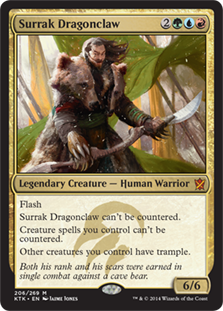Math is everywhere in Magic: the Gathering. It only takes one prolonged game, one convoluted system state, or one hard to understand combo to see the amount of numbers that can get thrown around in the game, be it as part of a player’s actions or just the operational behavior of the game itself.
Yes, underneath the game’s bevvy of flavor and keywords, it’s practically impossible to avoid how much Magic relies on math to work. And this should be no surprise: Richard Garfield was a mathematician before he started dabbling in game design. Most games involve math in some form during the design process to begin with, true, but the volume to which it factors into Magic’s gameplay is unavoidable.
Whether it’s the probability of drawing the cards you want, maximizing your deck’s output potential, or calculating your chances of your next move succeeding, Magic has no shortage of situations that would make statisticians drool with interest. Even with it also incorporating a healthy dose of randomized luck, the vast majority of the game is one mathematical encounter after another.
That said, most of the time players don’t actually need to do much number crunching to enjoy the game. While the occasional difficult decision or wacky combo arises that forces you to do some actual calculations, most of the math resides at the functional and design levels of the game.
One way to see this is by demonstrating the relationship between a creature’s abilities versus what it costs to cast. A lot of factors go into developing what a creature’s size, traits, and CMC ultimately will be, including the color(s) of the creature, the needs of the set, and how much R&D wants to ramp up or tone down the power of Standard at the time of the set’s release, but in general there is a baseline template to work with when it comes to figuring out what a creature roughly should cost. It’s not universal, but the creature formula essentially works like this:
CMC of X = X/X (Power & Toughness) + 1 mana for each positive ability – 1 mana for each rarity above common
Hence, a common 2/2 Grizzly Bears costs two, and a common 4/4 Rumbling Baloth costs four, whereas something like a 3/3 Flying Necrogen Scudder is at uncommon and a 6/6 Crosis, the Purger with two abilities is bumped up to rare.
Any creature beneath this baseline comparison is generally viewed as weak and ‘below curve’, whereas any that exceeds it is viewed as powerful and ‘above curve’. As players we hate to see lots of the former but love to play with the latter, in no small part because above curve creatures are the epitome of efficiency. You’re getting more than you should for your investment, and that’s always a good feeling – be it in games of Magic or the real world.
And with that in mind, let’s look at once such example of recent above curve creature that’s well suited for the Commander scene.
Today we have: Surrak Dragonclaw

Name: Surrak Dragonclaw
Edition: Khans of Tarkir
Rarity: Mythic Rare
Focus: Anti-Counter Magic / Creature Buffing
Highlights: Using the baseline formula, Surrak Dragonclaw should either cost six mana or be a 5/5. Even taking into account its tricolor nature, that puts this iconic clan leader easily above the standard creature curve. That feature alone may be enough for some players to give it due attention in their decks, but it offers so much more if given the chance.
For starters, Surrak (when not used as a Commander) can make excellent use of its ability to Flash himself onto the battlefield. This can make for an imposing surprise 6/6 blocker or an efficient creature to drop into play right before your turn. Surrak’s Flash trait can be used on offense too in the right circumstances when used in tandem with his Trample-granting ability. This pairing can be quite potent when attacking someone with an army of creatures and they throw up a bunch of chump blockers, letting you walk over their defenses and do extra damage in one fell swoop.
Who doesn’t love a surprise Overrun?
Although not super common in all EDH settings, Surrak’s anti creature counter ability can also come in quite handy in the right circumstances. By simply being on the battlefield, this gives you the freedom to drop out large and / or dangerous creatures – something all three of its colors are capable of – without fear of a surprise countering. This is especially handy in the middle to late stages of an EDH game where you may be pushing for a game ending (or at least player ending) offensive and need to ensure your creatures make it to the board.
Aside from the three color requirement to cast him, Surrak offers little downside to its inclusion in a deck that can house it. The biggest strike really is that the abilities themselves individually aren’t all that jazzy and can almost feel tacked on to an efficiently sized body. Which is odd for such a beloved character from the Tarkir block.
Yet if that’s the biggest issue, that means Surrak is well worth consideration. If anything, it’s a great example of a card whose individual pieces may not be super exciting but its overall worth is well above the sum of its parts.
Keep an eye out for us to be regularly featuring other more accessible-but-worth-it Commander cards going forward. In the meantime, we’ll keep the light on for you.
![]()
You can discuss this article over on our social media!
Do you have a particular Commander card to suggest for us to shine a future Spotlight on? You can send suggestions to ryan@cardboardrepublic.com
